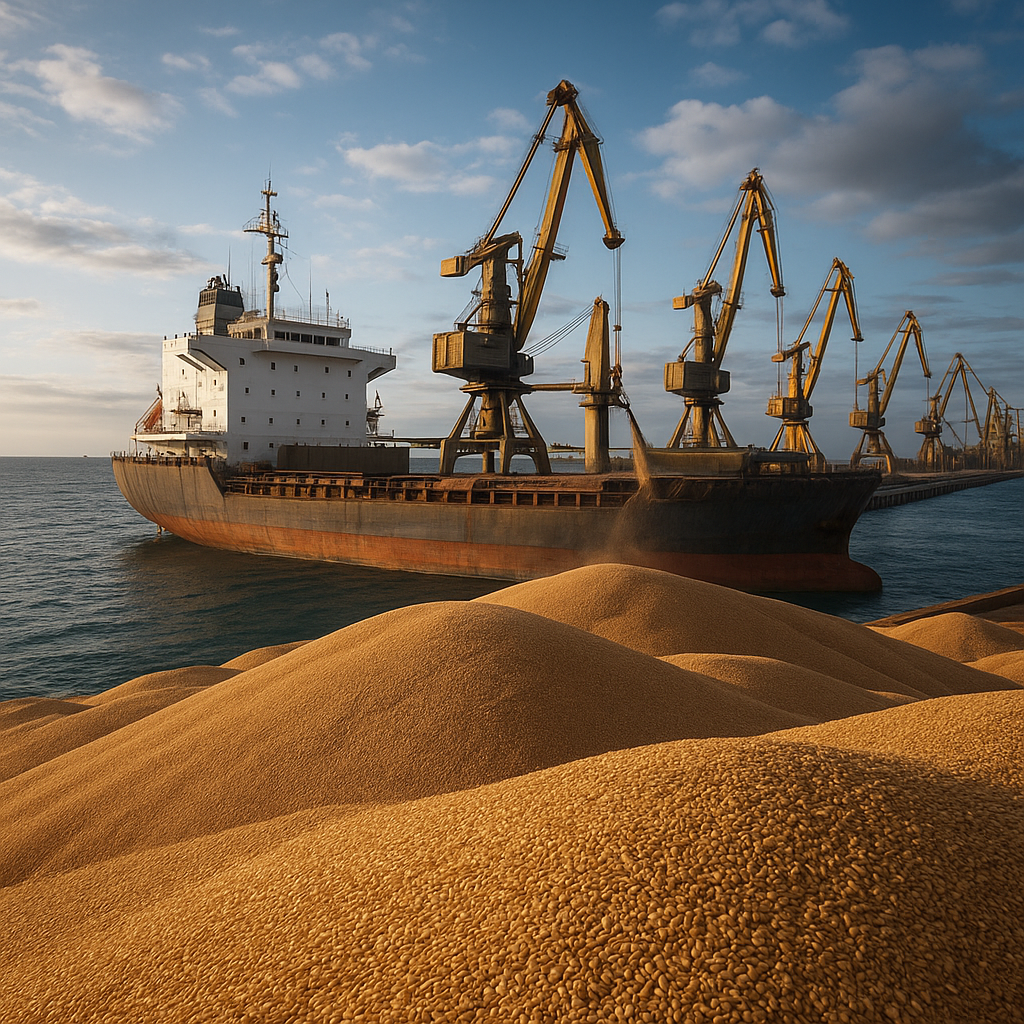The role of export quotas in balancing domestic grain needs is a critical aspect of agricultural policy that affects food security, market stability, and international trade dynamics. As countries strive to ensure that their populations have access to sufficient food supplies, export quotas serve as a tool to regulate the amount of grain that can be sold abroad. This article delves into the complexities of export quotas, examining their implications for domestic markets, international relations, and the global grain trade.
Understanding Export Quotas
Export quotas are government-imposed limits on the quantity of a specific commodity that can be exported during a given time period. These quotas are often implemented in response to various economic, social, and environmental factors. In the context of grains, export quotas can be used to protect domestic food supplies, stabilize prices, and ensure that local farmers can compete effectively in the market.
One of the primary reasons for implementing export quotas is to safeguard food security. When a country faces potential shortages due to poor harvests, rising domestic demand, or other unforeseen circumstances, limiting exports can help ensure that there is enough grain available for local consumption. This is particularly important in countries where agriculture plays a vital role in the economy and where a significant portion of the population relies on locally produced grains for their sustenance.
Export quotas can also serve to stabilize domestic grain prices. In times of high demand or low supply, the prices of grains can fluctuate significantly. By controlling the amount of grain that is allowed to leave the country, governments can help prevent price spikes that could make food unaffordable for many citizens. This price stability is crucial for both consumers and producers, as it allows for better planning and investment in the agricultural sector.
The Impact of Export Quotas on Domestic Markets
The implementation of export quotas can have profound effects on domestic grain markets. On one hand, these quotas can provide a safety net for local farmers, ensuring that they have a stable market for their products. By limiting the amount of grain that can be exported, governments can help maintain higher prices for domestic grains, which can incentivize farmers to increase production and invest in their operations.
On the other hand, export quotas can also create challenges for farmers and grain traders. When quotas are set too low, they can lead to oversupply in the domestic market, driving prices down and potentially harming farmers’ incomes. Additionally, if farmers perceive that they cannot sell their grain internationally, they may be less likely to invest in improving their yields or adopting new technologies, which can hinder long-term agricultural development.
Moreover, the imposition of export quotas can lead to tensions in international trade relations. Countries that rely on imports of grains may view export quotas as a protectionist measure that disrupts the global supply chain. This can result in retaliatory actions, such as tariffs or trade restrictions, which can further complicate the dynamics of international grain markets.
Case Studies of Export Quotas in Action
To better understand the role of export quotas in balancing domestic grain needs, it is helpful to examine specific case studies from around the world. These examples illustrate the diverse ways in which countries have implemented export quotas and the varying outcomes of these policies.
Case Study 1: Russia’s Wheat Export Quotas
In recent years, Russia has emerged as one of the world’s leading wheat exporters. However, the Russian government has also implemented export quotas to manage domestic grain supplies and prices. In response to rising domestic prices and concerns about food security, Russia has periodically restricted wheat exports, particularly during times of poor harvests or increased domestic demand.
These export quotas have had mixed results. While they have helped stabilize domestic prices and ensure that local consumers have access to affordable wheat, they have also led to tensions with importing countries that rely on Russian wheat. Additionally, the unpredictability of export quotas can create uncertainty for international buyers, impacting their purchasing decisions and long-term planning.
Case Study 2: India’s Rice Export Restrictions
India is another country that has utilized export quotas as a means of balancing domestic needs with international trade. As one of the largest producers of rice in the world, India has implemented various export restrictions to ensure that its population has access to this staple food. During periods of high domestic demand or low production, the Indian government has limited rice exports to prevent price increases and ensure food security.
While these measures have been effective in maintaining domestic rice prices, they have also drawn criticism from other countries that depend on Indian rice imports. The restrictions can lead to supply shortages in international markets, driving up prices and creating challenges for countries that rely on Indian rice to meet their food needs.
Challenges and Considerations for Future Policies
As countries continue to navigate the complexities of global grain markets, the role of export quotas will remain a contentious issue. Policymakers must carefully consider the potential impacts of these quotas on both domestic and international markets. Striking a balance between protecting local food supplies and maintaining healthy trade relationships is essential for ensuring food security and economic stability.
One of the key challenges in implementing export quotas is the need for transparency and predictability. Farmers and traders require clear guidelines regarding export limits to make informed decisions about production and sales. Sudden changes in quotas can lead to market volatility and uncertainty, which can have detrimental effects on both domestic and international grain markets.
Additionally, as climate change continues to impact agricultural production, countries may need to adapt their export quota policies to address emerging challenges. For instance, extreme weather events can disrupt harvests and lead to sudden shifts in supply and demand. Policymakers must be prepared to respond to these changes in a way that balances the needs of domestic consumers with the realities of global trade.
Conclusion
The role of export quotas in balancing domestic grain needs is a multifaceted issue that requires careful consideration of economic, social, and environmental factors. While these quotas can provide essential protections for local farmers and consumers, they can also create challenges in international trade and market stability. As countries continue to grapple with the complexities of global grain markets, the effective management of export quotas will be crucial for ensuring food security and fostering sustainable agricultural development.













